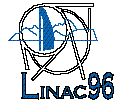Conceptual Design of a Superconducting High Intensity Proton Linac
K. C. Dominic Chan
Los Alamos National Laboratory, USA
Abstract
High-intensity CW proton linacs are being proposed for neutron spallation sources for accelerator transmutation technology applications. These linacs have energies and currents around 1 GeV and 100 mA, respectively. Linac designs using room-temperature copper technology require a lot of microwave power and the cost of operating them is high. Superconducting linacs, because of their insignificant wall losses, provide an attractive alternative. Recently, a superconducting design has been carried out in Los Alamos. Due to the high availability required by the applications, the design has been based on demonstrated superconducting technology and short independently phased cavities that have large velocity acceptance. The resulting design, besides saving power and operating cost, has high operational flexibility, high power upgradability, and low beam loss.
Although a superconducting linac offers many advantages, a proton superconducting linac has yet to be built. The unanswered questions about the feasibility of the design concern the multipacting characteristics of elliptical cavities with beta less than one and the effects of proton beam spill on the long-term superconducting characteristics of niobium. Both issues can be resolved by straightforward tests.
In this paper, the design and the critical issues will be described and comparisons will be made to the room-temperature linac design.
Announcements |
Committees |
Exhibition |
General |
Hotels |
Index |
Linacs |
Social |
Welcome |
sln 11 March 1996
 Conference
Conference Conference
Conference